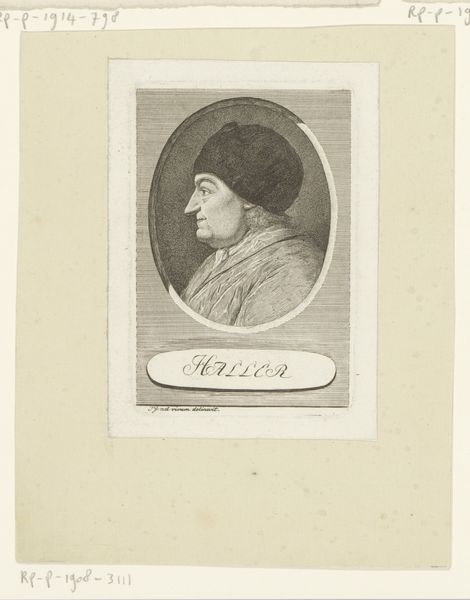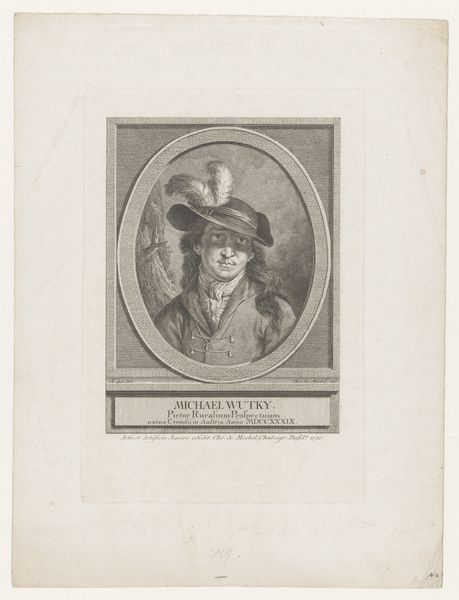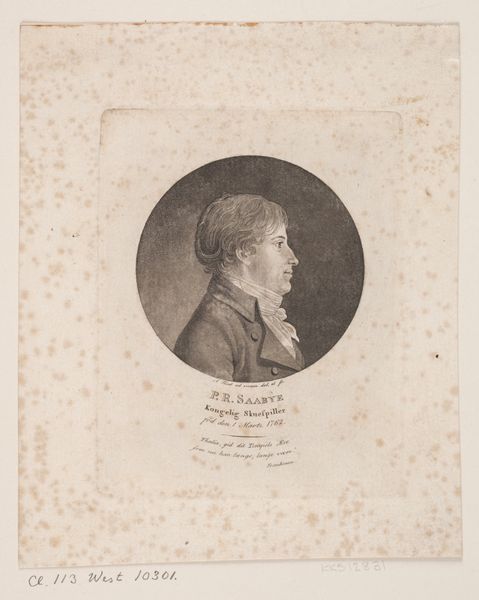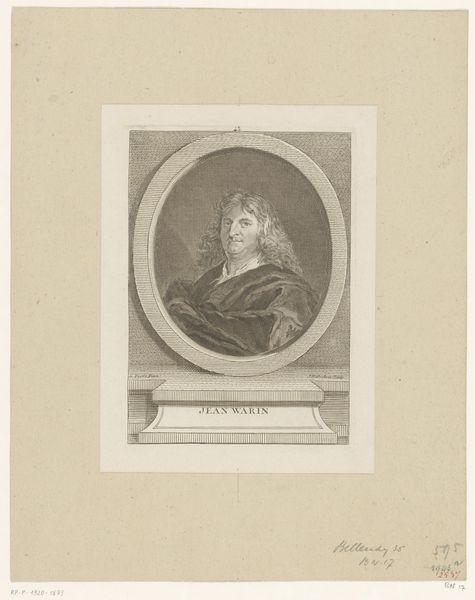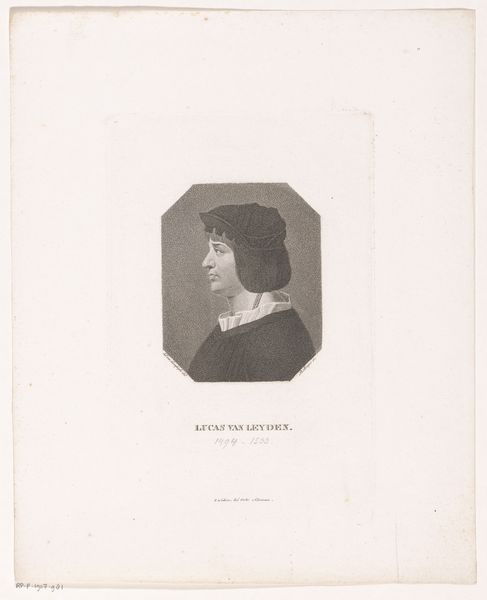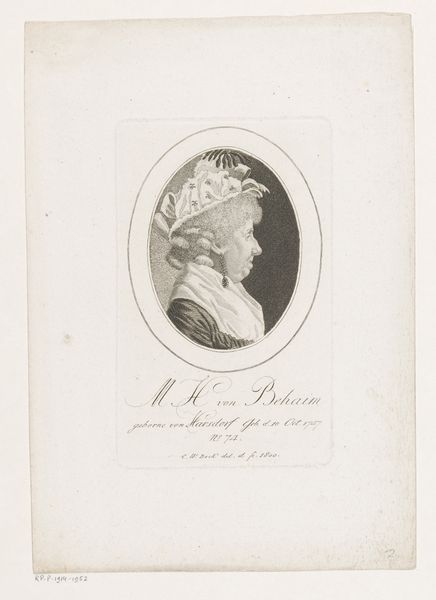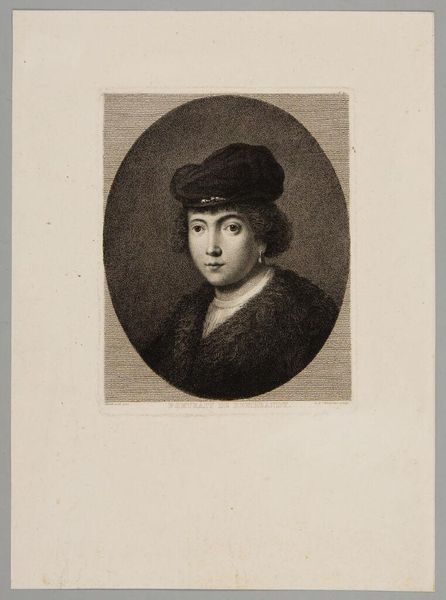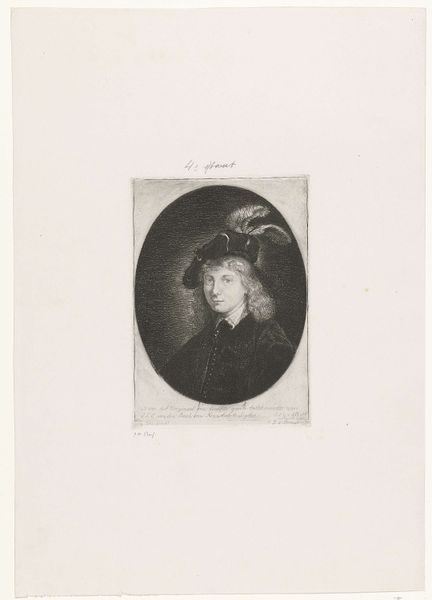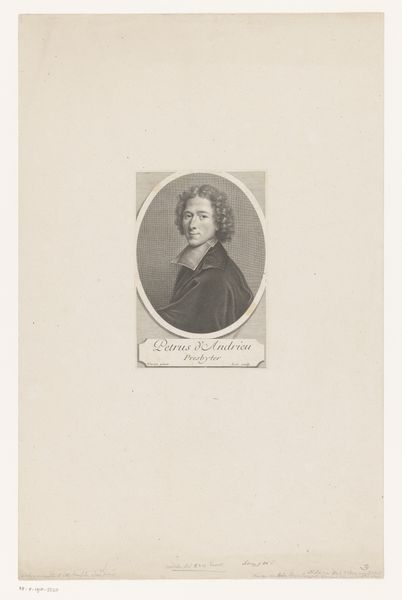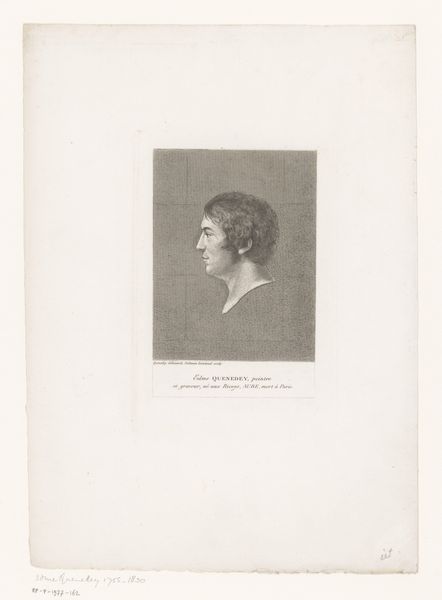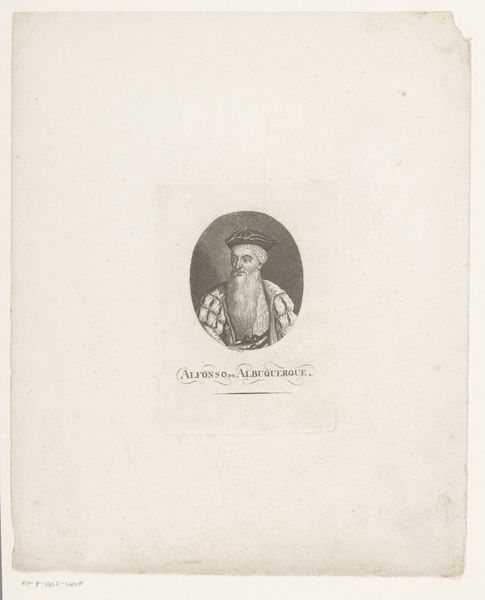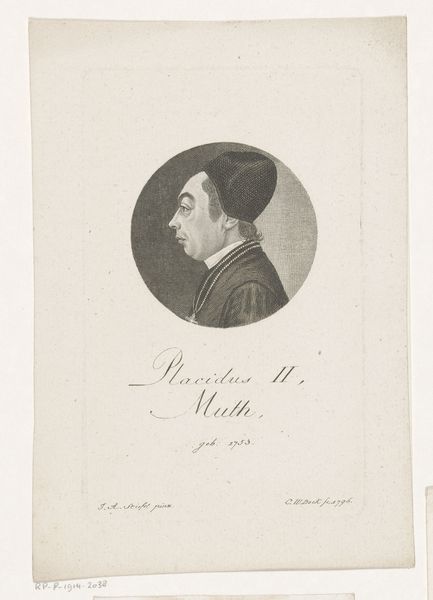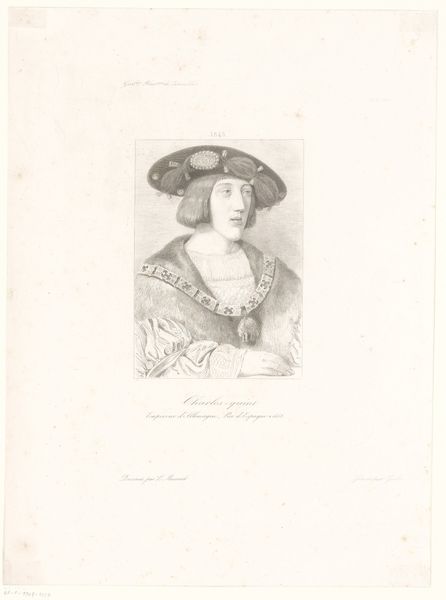
Dimensions: height 126 mm, width 83 mm
Copyright: Rijks Museum: Open Domain
Editor: This is a portrait of Sebastian Brand, made between 1759 and 1815 by Heinrich Pfenninger, using engraving. It strikes me as very formal, almost austere despite the fur hat. What do you make of it? Curator: This piece offers us a glimpse into the world of portraiture and its function within 18th-century society. It's fascinating how the medium of engraving, often used for mass dissemination, is applied here to immortalize an individual. Who was Sebastian Brand and how did Pfenninger's image of him serve a purpose? Editor: That's a great question, I am curious! Given the somewhat serious depiction and period details, would this portrait have carried any political implications? Curator: Potentially, yes. Consider that portraits were often commissioned by individuals or institutions to project a certain image of power, status, or virtue. The fur hat, the quality of the clothing -- these are all signifiers of wealth and social standing. Did the sitter have a particular political affiliation or role within society that Pfenninger might be subtly highlighting, or perhaps even critiquing? And how might this image function in relation to the tradition of history painting prevalent at the time? Editor: It’s interesting to consider that seemingly simple images may hold layers of contextual narrative waiting to be explored. This conversation has changed how I view the role and impact that a piece of artwork can have within its historical context. Curator: Absolutely, and that’s precisely the point. Examining art through its historical, social, and political contexts reveals not just the aesthetic choices, but the complex interplay of power, representation, and cultural values at play. I also feel that now, armed with all the answers about Brand, we could contextualise this artwork better!
Comments
No comments
Be the first to comment and join the conversation on the ultimate creative platform.
